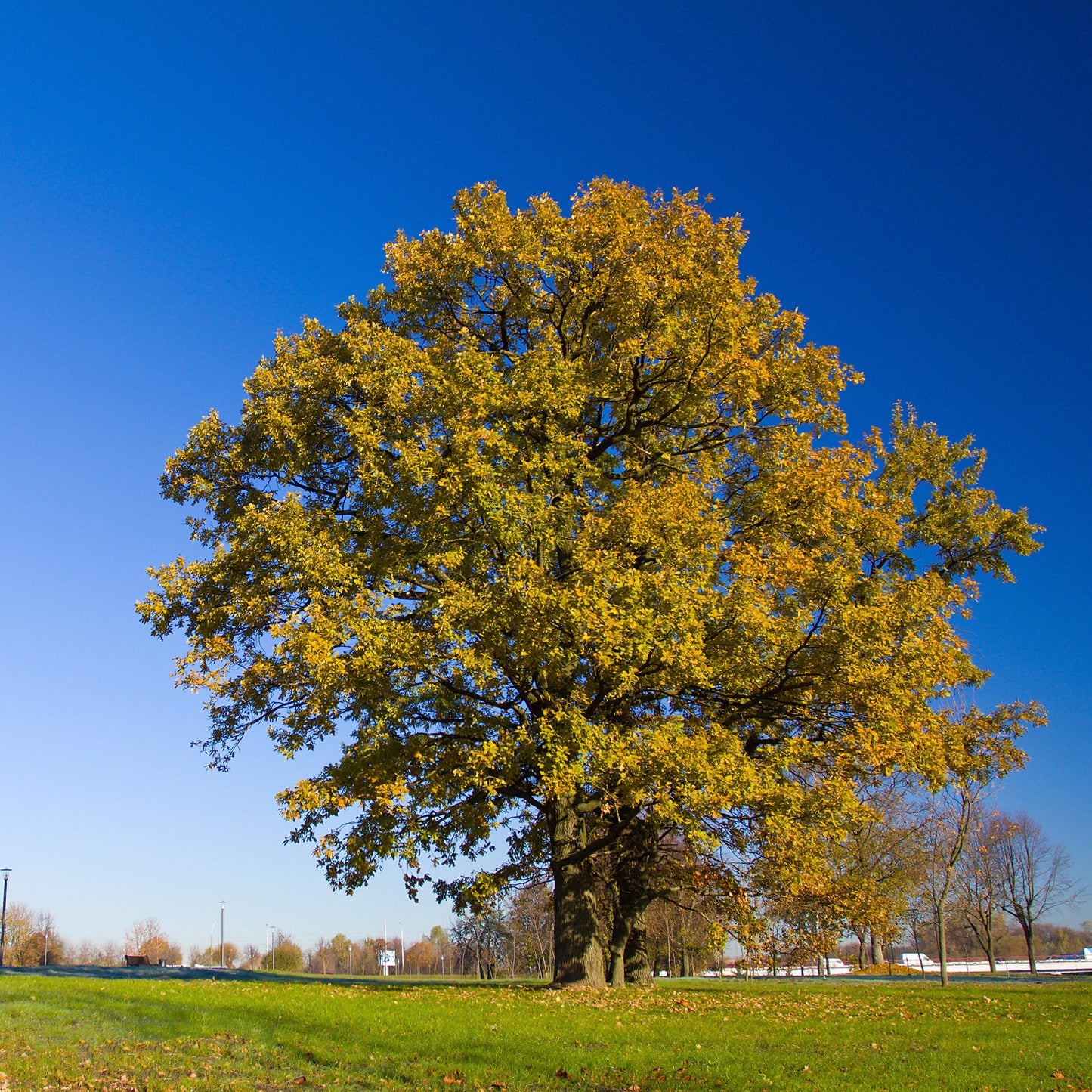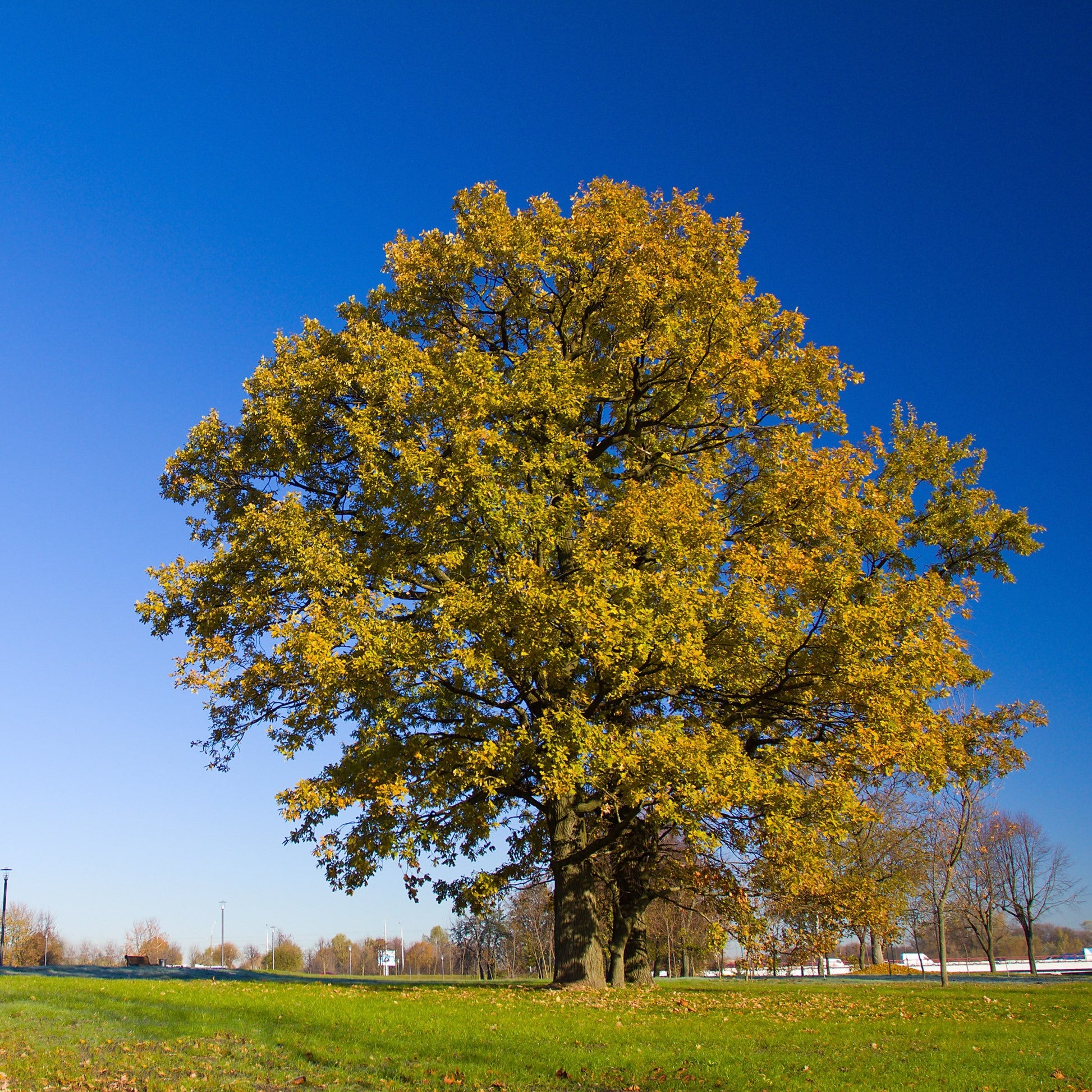Limited Quantities - Reserve Now For Fall
Overcup Oak Tree
Overcup Oak Tree
Couldn't load pickup availability
Quercus lyrata
The Common Overcup Oak Tree is a long-lived, hardy oak species known for its strong adaptability, unique acorns, and ability to thrive in wet soils. With its tall, broad canopy, lush green leaves, and golden-brown fall foliage, this fast-growing, flood-tolerant tree is an excellent choice for large landscapes, wildlife habitats, and erosion control projects.
Common Overcup Oak Tree
| Attribute | Details |
|---|---|
| Variety | Rooted |
| Botanical Name | Quercus lyrata |
| Common Names | Overcup Oak, Swamp Oak |
| Mature Height | 45-70 feet |
| Mature Width | 40-60 feet |
| Growth Rate | Moderate to Fast (1-2 feet per year) |
| Lifespan | 150-200+ years |
| USDA Hardiness Zones | 5-9 |
| Sun Preference | Full sun to partial shade |
| Soil Type | Well-drained to wet, loamy, sandy, or clay soils |
| Soil pH | Slightly acidic to neutral (5.0-7.5) |
| Water Needs | Low to high; highly flood-tolerant |
| Fall Foliage | Golden brown to yellow |
| Wildlife Attraction | Birds, squirrels, deer, and other wildlife |
| Growth Habit | Large, rounded canopy with strong branching |
| Self-Pollinating? | Yes |
| Landscape Uses | Shade tree, wildlife habitat, erosion control, floodplain restoration |
| Maintenance Level | Low |
Environmental Benefits
🌳 Flood & Drought Resilient – Thrives in low-lying, wet soils but also withstands drought conditions, making it ideal for floodplains and water-prone landscapes.
🐿️ Wildlife Habitat & Food Source – Produces large acorns that provide essential food for birds, deer, and small mammals.
🌿 Air Purification & Soil Stabilization – Helps filter air pollutants, prevent erosion, and improve soil quality with its deep root system.
🌎 Carbon Sequestration – As a long-lived, large tree, it plays a crucial role in storing carbon and combating climate change.
Pros & Cons
| Pros | Cons |
|---|---|
| Highly adaptable to wet and dry soils | Can take up to 20-25 years to produce acorns |
| Provides strong shade with a broad canopy | Requires ample space to grow |
| Flood-tolerant, great for lowland areas | Acorns may create litter on lawns and walkways |
| Resistant to many pests and diseases | Slow-growing when young, but accelerates over time |
| Supports diverse wildlife populations | Not ideal for small urban yards due to its size |
Planting & Care Guide
- Spacing: Plant 40-60 feet apart for full canopy growth
- Soaking: Soak roots in water for 6-12 hours before planting
- Planting Depth: Dig a hole twice as wide as the root system, ensuring roots are level with the soil surface
- Mulching: Apply a 2-3 inch layer of mulch to retain moisture and suppress weeds
- Pruning: Minimal pruning needed; remove dead or weak branches in late winter
- Fertilization: Apply a balanced fertilizer in early spring for young trees, but mature trees rarely need fertilization
- Watering: Water regularly in the first year, then reduce as the tree matures
The Common Overcup Oak Tree is a valuable, long-lasting addition to large landscapes, conservation projects, and wildlife-friendly areas. Whether planted for shade, habitat restoration, or erosion control, this resilient, low-maintenance tree provides centuries of benefits to both people and nature.
Share


